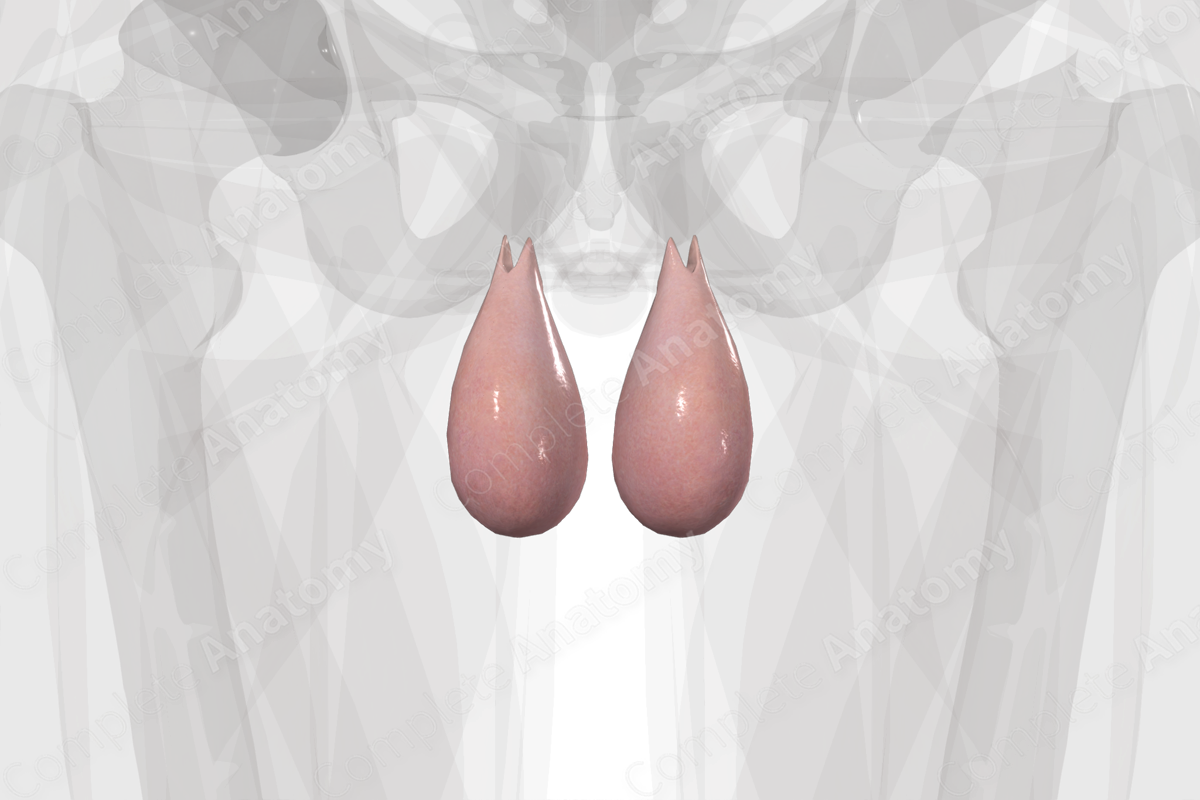
Quick Facts
Location: Within the scrotum.
Arterial Supply: Testicular artery.
Venous Drainage: Pampiniform plexus.
Innervation: Autonomic: Testicular plexus.
Lymphatic Drainage: Lumbar lymph nodes.
Related parts of the anatomy
Structure/Morphology
The testes are primary sex organs that play a crucial role in both the male reproductive and endocrine systems. The testes are paired ovoid structures that are in the scrotum. They are composed of up to 900 coiled seminiferous tubules, each averaging more than half a meter long, in which the sperm is produced (Standring, 2016). The testes are enclosed in a tough capsule composed of three tunicae (layers): the tunica vasculosa, albuginea, and vaginalis.
Anatomical Relations
The left testis normally lies at a lower level than the right testis within the scrotum. The testes are suspended by the spermatic cord, through which structures entering or exiting the testes travel. The upper pole of the testis is tilted anterolaterally and is attached to the head of the epididymis, whereas the lower pole is tilted anteromedially.
Function
The placement of the testis in the scrotum and the countercurrent exchange mechanism of the pampiniform plexus ensures that the temperature of the testis is 3–4 °C lower than normal body temperature. This temperature is optimum for sperm production. The two testes produce up to 120 million sperm in the human adult each day (Standring, 2016). Sperm can be stored in the testis and remain fertile for up to a month. During this time, they are kept in an inactive state by multiple inhibitory substances. The testes are also heavily involved in the endocrine system. Leydig cells produce hormones that promote the development of the male reproductive system and secondary male characteristics.
Arterial Supply
The testes are supplied by the testicular artery, which arises from the abdominal aorta. It travels inferiorly to the pelvis as a retroperitoneal structure. The testicular artery then travels through the inguinal canal by passing through the deep and superficial inguinal rings. Branches enter the mediastinum of the testis and ramify in the tunica vasculosa.
Venous Drainage
The testes are drained by the pampiniform plexus, a network of vessels that surround the spermatic cord. The pampiniform plexus drains into the left and right testicular veins. The left testicular vein drains into the left renal vein, whereas the right testicular vein drains directly into the inferior vena cava.
Innervation
The testes are innervated by the testicular plexus. The nerve fibers arise from the tenth and eleventh thoracic spinal segments. They travel to the aortic and renal plexuses and follow the testicular arteries to reach the testis in the pelvis.
Lymphatic Drainage
Lymphatic drainage of the testis drains into the para-aortic and inter-aortocaval lymph nodes (lumbar nodes).
List of Clinical Correlates
—Testicular cancer
—Variocele
References
Standring, S. (2016) Gray's Anatomy: The Anatomical Basis of Clinical Practice. Gray's Anatomy Series 41 edn.: Elsevier Limited.
Learn more about this topic from other Elsevier products
Testis, ductus deferens, and seminal vesicle histology: Video, Causes, & Meaning

Testis, ductus deferens, and seminal vesicle histology: Symptoms, Causes, Videos & Quizzes | Learn Fast for Better Retention!
Testis

Testis is the male gonad containing two functional parts: the seminiferous tubules for the production and transport of male germ cells (spermatogenesis) and the interstitial compartment containing Leydig cells that produce androgens.




